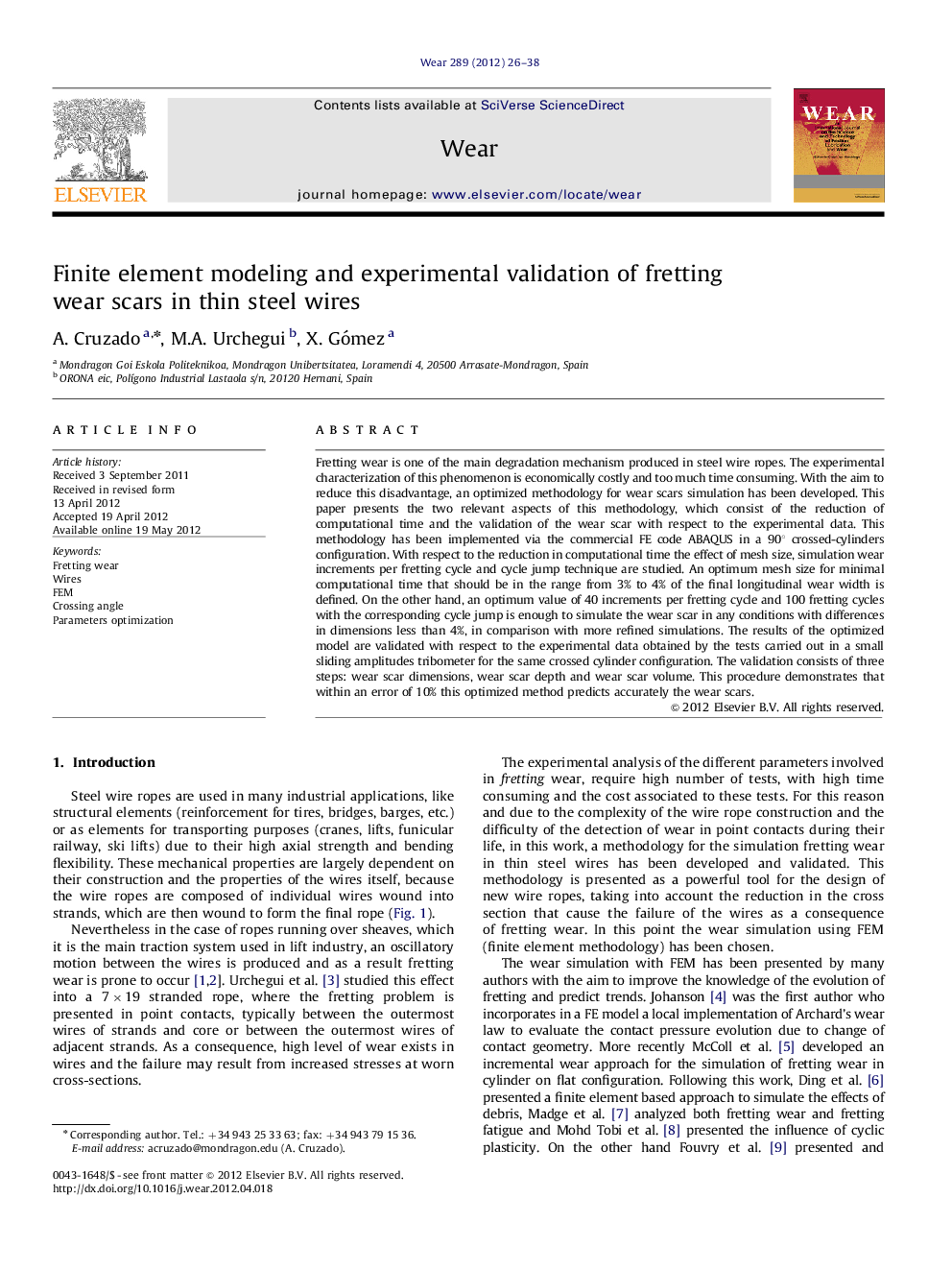| Article ID | Journal | Published Year | Pages | File Type |
|---|---|---|---|---|
| 617849 | Wear | 2012 | 13 Pages |
Abstract
Fretting wear is one of the main degradation mechanism produced in steel wire ropes. The experimental characterization of this phenomenon is economically costly and too much time consuming. With the aim to reduce this disadvantage, an optimized methodology for wear scars simulation has been developed. This paper presents the two relevant aspects of this methodology, which consist of the reduction of computational time and the validation of the wear scar with respect to the experimental data. This methodology has been implemented via the commercial FE code ABAQUS in a 90° crossed-cylinders configuration. With respect to the reduction in computational time the effect of mesh size, simulation wear increments per fretting cycle and cycle jump technique are studied. An optimum mesh size for minimal computational time that should be in the range from 3% to 4% of the final longitudinal wear width is defined. On the other hand, an optimum value of 40 increments per fretting cycle and 100 fretting cycles with the corresponding cycle jump is enough to simulate the wear scar in any conditions with differences in dimensions less than 4%, in comparison with more refined simulations. The results of the optimized model are validated with respect to the experimental data obtained by the tests carried out in a small sliding amplitudes tribometer for the same crossed cylinder configuration. The validation consists of three steps: wear scar dimensions, wear scar depth and wear scar volume. This procedure demonstrates that within an error of 10% this optimized method predicts accurately the wear scars.
Related Topics
Physical Sciences and Engineering
Chemical Engineering
Colloid and Surface Chemistry
Authors
A. Cruzado, M.A. Urchegui, X. Gómez,
